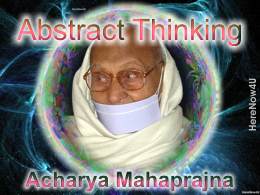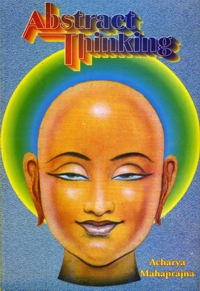
Self-purification goes further than self-control. In fact, without self-purification self-control can never be complete. Self-control has its limits. Self-purification is necessary for changing one's habit and to wholly transform one's character and personality. It is not a matter of mere change of direction, but a complete transmutation. The directional change of psychology is a process of changing the course of a fundamental instinct; it is a technique of going into an opposite direction. A man may have a lustful disposition. However, when the sexual instinct is sublimated, it manifests itself in unique ways in art, aesthetics, etc. Self-purification does not involve a change of direction, but one's character is fundamentally transformed. The old mentality altogether dissolves giving place to a new one. The strong effects of a particular habit or character are so weakened that it no longer presents an obstacle.
But what is self-purification and what are its principles? The spiritual practitioners and self-realised souls made many important discoveries in this sphere and fortunately these were preserved and are available to us today.
KayotsargaThe first step is kayotsarga. Kayotsarga means - total relaxation of the body. Through it, old habits are changed, refined.
The sadhak resolutely says to himself:
"I practise kayotsarga to purify or sublimate an undesirable habit or disposition to undertake penance, to cleanse and purify the heart, to heal up the wound inflicted by addiction to remove the thorn thereof and to annihilate the sinful atoms of attachment and illusion, and of karma, which, on account of bad habits, permeate the body and the mind from all sides."
Kayotsarga ('Self-awareness by relaxation') removes all ills, purifies character. He who does not know the technique of kayotsarga cannot change his nature.
The specialists of self-hypnotism have enumerated four canons. The first canon is: "auto-relaxation". It means self-relaxation. It is the very process of kayotsarga. Without the technique of kayotsarga the process of changing one's habit is not completed. Whether it is the matter of changing one's disposition or curing a disease, the first essential step is kayotsarga.
Self Analysis - Anupreksha
The second axiom of changing one's disposition is - "self analysis" - anupreksha. We must analyse the habit, the disposition that we want to change. One has to practise anupreksha - self-observation and self-analysis. Self-analysis is the second rule of hypnotism. The second rule of the technique of kayotsarga is - anupreksha. Both run parallel to each other. If I want to get rid of anger, I must do some self-analysis as to why anger is bad. Why do I want to get rid of it? If there is nothing wrong with it, the question of abandoning anger does not arise. Is anger bad? I must reflect upon it. I must dissect it, practise anupreksha, go deep into it, and reach a state of perceptual judgment and reflective analysis. Then shall I come to know that anger is a kind of fever. When it enters the body, it breaks it up quite, and impairs one's powers. It is a fever of the brain, of the heart and of the adrenal glands. It saps the vitality of all these three. When a man indulges in anger, the brain is affected first and foremost. It is all flushed. There is so much excitement and such terrible expense of energy as to cause extreme perturbation and every part of the brain becomes red- hot. The second victim of anger is the heart. The moment a man is assailed by wrath, the heartbeat registers a sudden increase. The heart palpitates faster and starts functioning erratically. The third victim of wrath is the adrenal glands. While a man is in a state of rage, the adrenals are obliged to secrete more and more and their potency is diminished. Thus, the brain, the heart and the adrenal glands are all impaired. The three constitute important elements of life. Because of anger, the vitality of all three is undermined. Any retardation of the brain upsets the entire nervous system. With the enfeeblement of the heart, the circulatory system goes out of order. And with the emaciation of the adrenal glands, a man's vital power is destroyed.
Such are the consequences of anger. Here is an analysis of its effects. When, in the course of practising anupreksha, I reach this stage, I realize that anger must be abated, that it must be abandoned.
Then the question arises: "Is it possible for me to abandon anger?" The sadhak contemplates upon it. After contemplation, he discovers the fact that he has in him unlimited capacity: that he can renounce anger. Having realised this fact, he reaches the next stage of anupreksha - discretion.
Discretion, Judgment, Knowledge
The third axiom of kayotsarga is - discretion, judgment. The sadhak says to himself:
"I can renounce anger, because I am not anger. Anger is not my nature. Had anger been my nature, I could never renounce it. No man can get away from his real nature. But I am not anger. I am different from anger. I am knowledge. I am Truth. I am Bliss. Anger only covers my knowledge; it distorts my vision and vitiates my bliss. It destroys my powers."
Contemplating, thus, he arrives at judgment, wisdom - "I am not anger and anger is not my nature."
There are three ways by which change of nature may be wrought - kayotsarga, anupreksha and wisdom.
When the sadhak comes to realise that anger is not his nature that he is not anger, he attains clear knowledge. With clarity, the feet begin to advance of themselves along the right path.
Lord Mahavira said: ‘Above all, one must have clear knowledge.’ There is a dictum of hypnotism - "Knowledge is power. With clear knowledge, you can do what you will and you know how to do it."
Meditation on the Centre of Intuition
The fourth principle underlying change of nature is - meditation. Focus your attention on the Centre of Intuition located in the middle of the eyebrows. This is the centre of inner knowledge, the centre of intuition and right vision. All inner knowledge manifests itself through this centre. When attention is focused on the Centre of Intuition, it is easier to communicate with the unconscious. According to psychology, what only touches our gross, superficial mind is not very effective; it cannot change our personality. However, when we meditate on the Centre of Intuition, our resolve is communicated to the inner mind; it reaches the system of psychic colours (leshya) and that of psychic expression (adhyavasaya). Change begins to transpire. Meditation on the Centre of Intuition is the fourth step.
Refuge
The fifth step in the process of self-transformation is - refuge. We must seek refuge. This talk of seeking refuge does not seem to agree with the modern doctrine of self-hypnosis. Self- relaxation, self-analysis and autosuggestion seem to be quite in order there; also self-awareness. But the talk of seeking refuge strikes an incongruous note.
Nevertheless, the maxim of seeking refuge is a very important one. The question arises as to where and in whom do we seek refuge. There is no need to seek refuge in another; we must seek refuge in our own powers, or we may seek refuge in that which is possessed of infinite knowledge, infinite intuition, infinite bliss and infinite energy. We have to seek refuge where all these four infinities are manifested, where the seeds of all these have sprouted, grown, flowered and fructified. We do not have to seek refuge in a particular individual; rather we have to find refuge in this four-fold infinity. With the attainment of this refuge, a great subtle power is developed in a man. It produces strong electrical vibrations and the process of transformation begins.
 Acharya Mahaprajna
Acharya Mahaprajna

